The books only show you the pictures and in a very small way, they describe the niche environments as best they can. I like the Paul Humann series the best.
Beside
going slowly, on every dive, carry a small flashlight (daytime, too). That and a small single element glass lensed magnifier. I put a lanyard on one of these: LINK->
POCKET MAGNIFIER Everybody on one of my trips gets one, I gave away 50 of them during the SeaHorse Festival during my host week at CCV. This $2.25 gadget has changed a lot of diver's lives.
You can also buy the $80 version from some other industry sources.
I did a one week hosting of the Roatan CCV Festival. Other featured speakers were Doctorates on Sea Horse... everything. All I wanted to do is teach the guests something they could really use... how to find Sea Horses, and also other critters. Know where they like to live, eat and make little critters....
FOLLOW THE DM. Don't simply gawk at what he found, look at where he found it. The truth is that these guys don't look for critters, they look at the species favored micro-niche environments. This same method applies to Sea Horses and Pipefish. They like certain distinct locations. Simply stated, since these two have limited swimming abilities, the will likely be found in the "vee" bottoms of small chutes, often hiding at the base of a specific soft Coral.
You didn't say where you were diving, with what dive op. If your DM feeds fish or hunts while diving, you got a lemon. You should be seeing a Sea Horse at least once in every 5 dives, a Pipefish maybe one in seven. I do prefer the South side because you have very
shallow verdant walls that are bathed in
Sunlight all day. Macro life flourishes here, likely the best in the Caribbean that is now accessible by citizen travelers. If you dive on the North/West, it is in the shadow and floridity of the walls is lessened because of storm tracks. That causes forum derision, but it is indisputable fact.
This Sunlight is their camouflage. Our eyes do not do well in high contrast areas. Lots of Sunlight provides them a food source and a happy place, but we are blinded and unable to see in the shadows of ledges. Use that flashlight!
Barracudas often hang just below overhangs- hiding in plain sight, using the shadows as camouflage.
The shallower you stay, you'll be in the observable benefit of the phototropic zone. 90% of Ocean life lives in the top 20 feet. (something like that)
Start be examining every Whip Coral that you always just fly past. Be on one side with your light on. Slowly run your hand about 4" away along he length of it, on the other side from you. Magically will appear the Wire Coral Shrimp. Without a light, they're all but invisible.
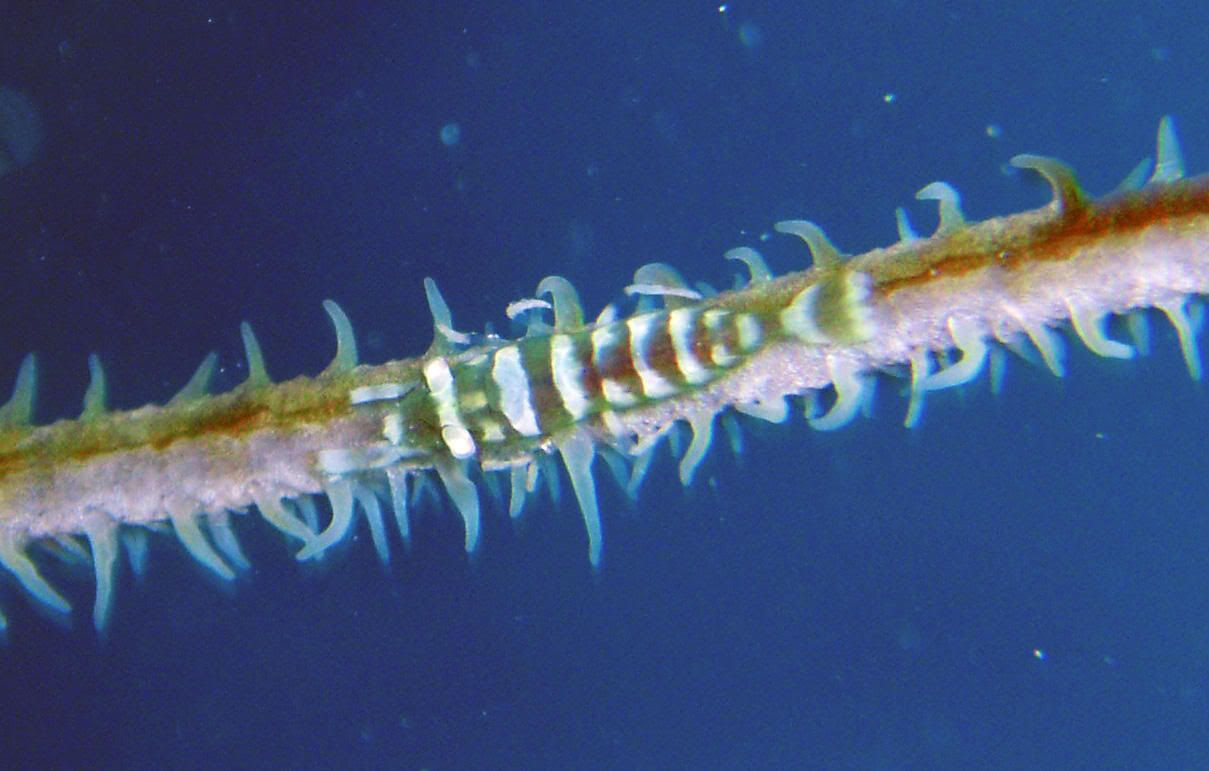
Hug the sandy bottom and approach very slowly. If you're within twenty feet of them and and higher than 1' off the sand, say bye-bye, find Garden Eels:
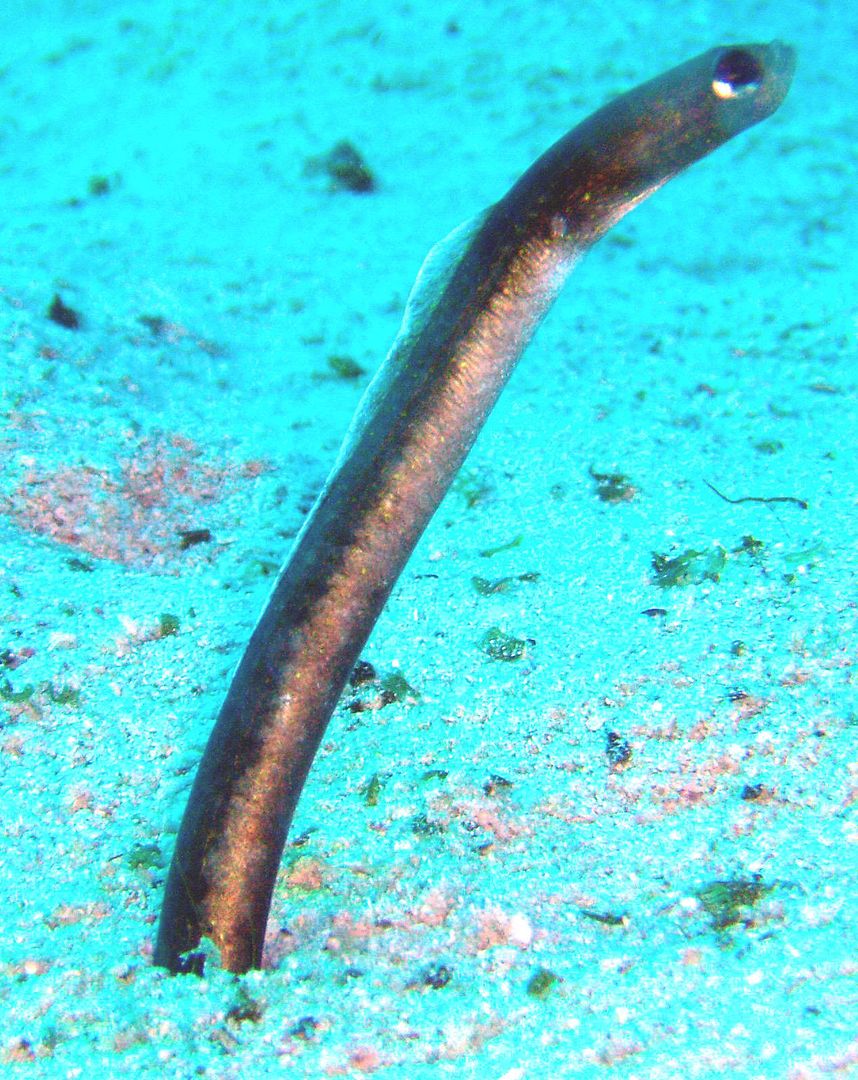
We see these little hydroids being blown about in the breeze of surge, but we're so busy "diving", no one looks.
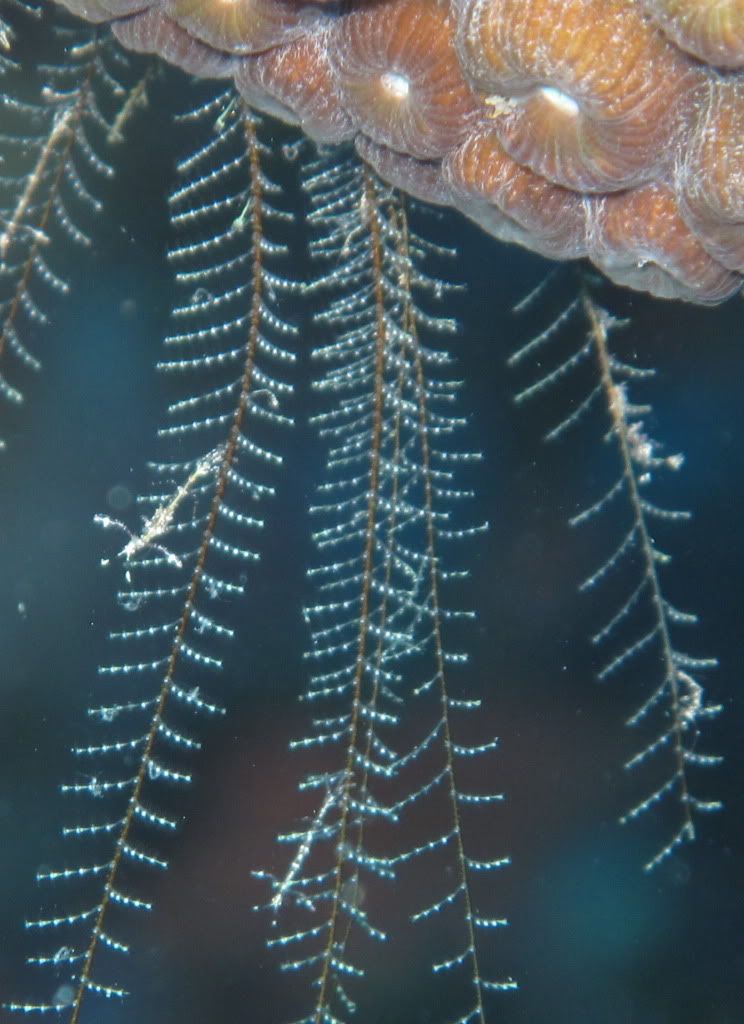
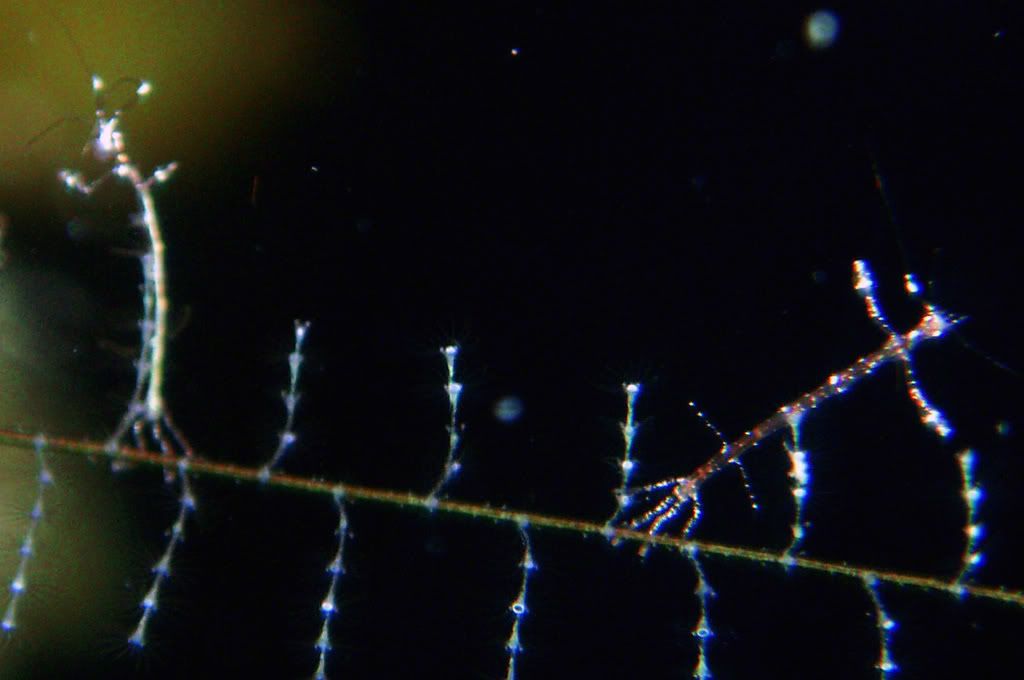
Holy cow.
On shallow sea fans (in the surge, at about 0-10fsw), the Solitary Hydroids are always overlooked, but it's easy to use a magnifier to find:
 Most folks are not going to go that shallow.
Locate and easy to see Corkscrew Anemone
Most folks are not going to go that shallow.
Locate and easy to see Corkscrew Anemone, see the resident Pedersen Cleaner Shrimp:
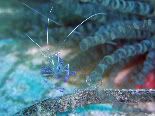
And if your patient, see who lives underneath that easy-to-spot Anemone:

A little Snapping Shrimp.
Look for motionless fish, sitting near the Corkscrew Anemone:

Each and every type of Anemone has a resident Crustacean species or three.
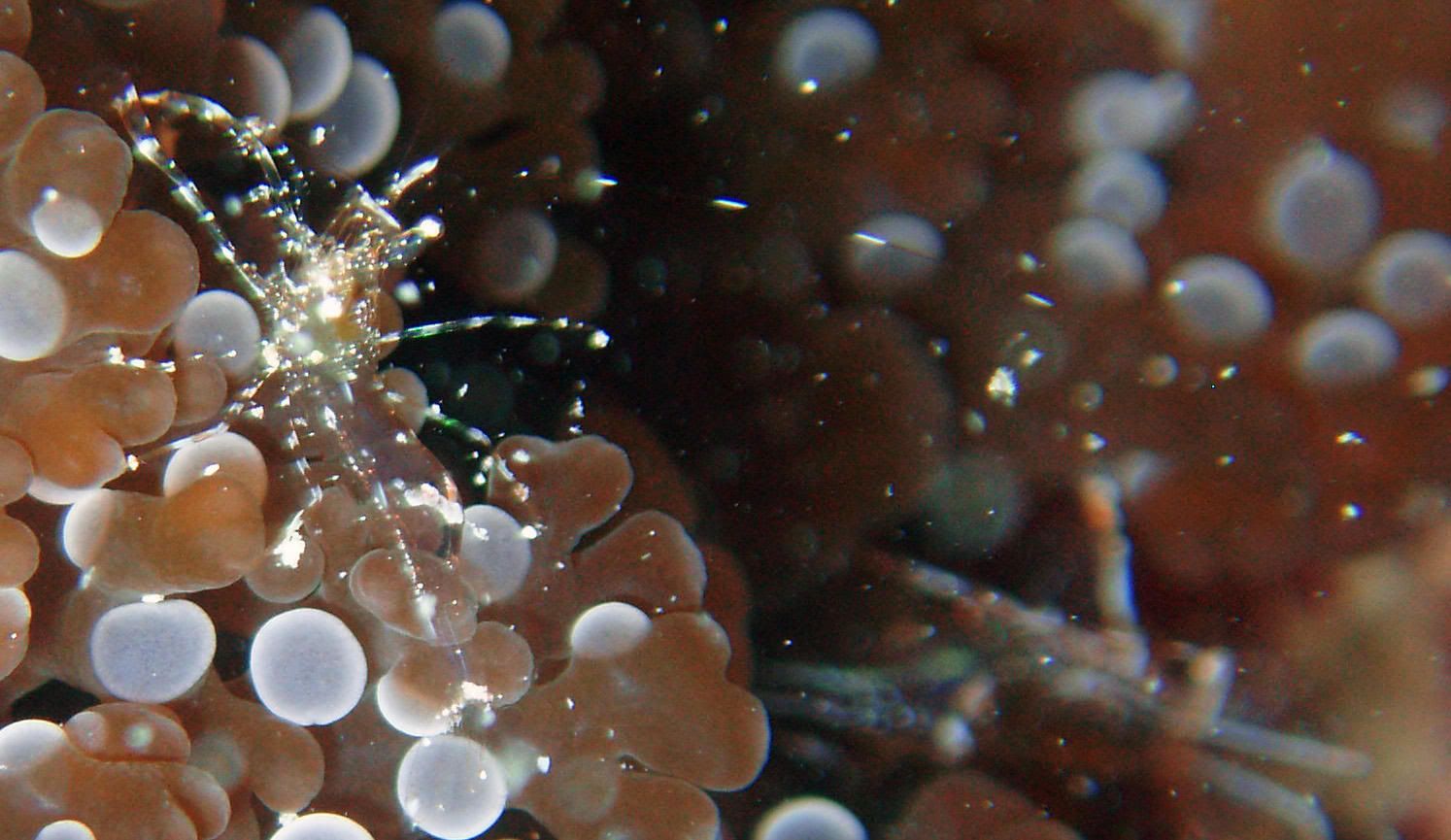
Corals, at night, among the Polyps, have a look:
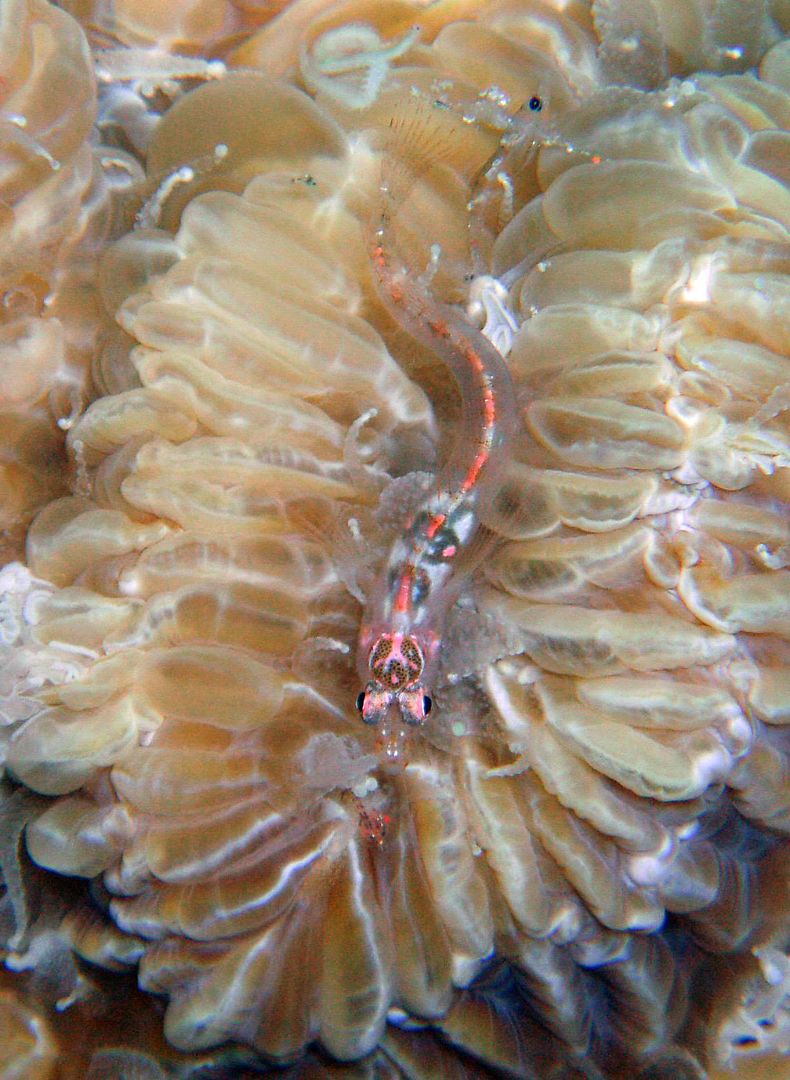
Look on angled Plate Corals at 35-45fsw:

Arrow Blennies.
Easy to spot- look in small "grotto" structures, their motion betrays them:
 By the way, you're swimming in it....
By the way, you're swimming in it....
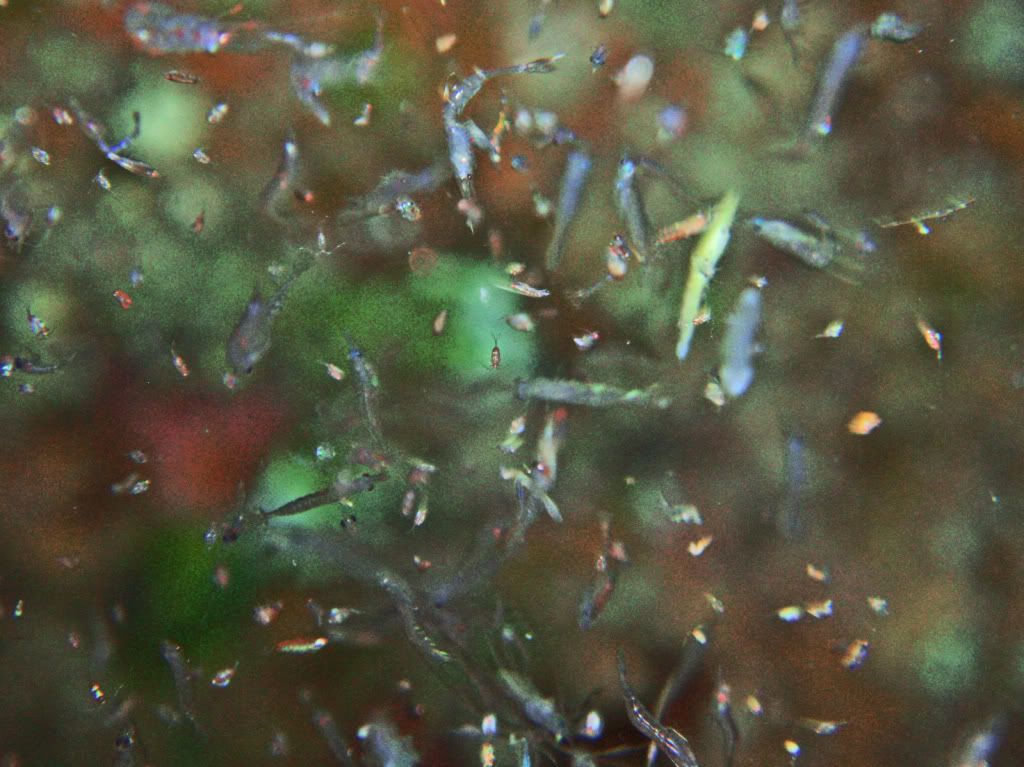
And then we can chat about UV light at night.
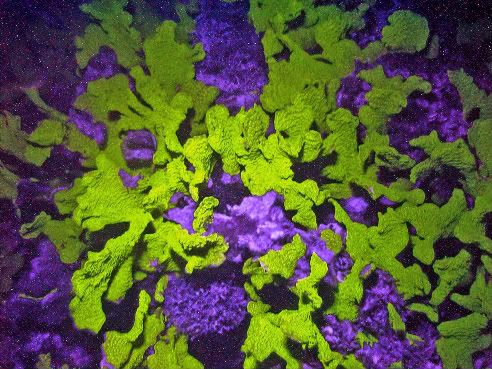
Stay shallow, go slowly. Study a 1 meter square area for 10 minutes. Be very amazed.


















